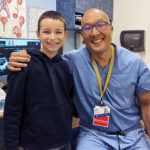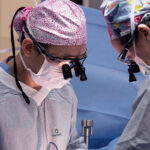Matt’s story: An innovative approach to midaortic syndrome
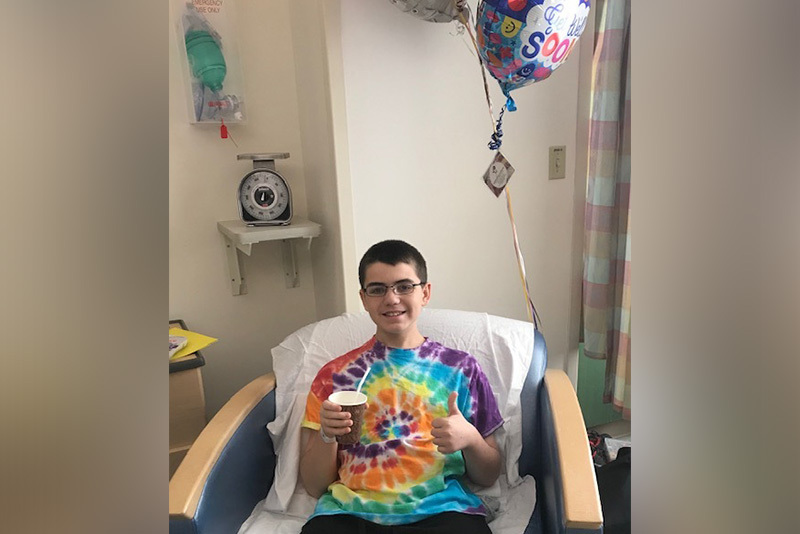
Until he was 12-and-a-half, Matt Sarracco had hardly missed a day of school. In fact, he had won awards for his near-perfect attendance. So it was concerning when, at a routine physical, his blood pressure soared to extremely high levels. “At first we thought the cuff must be broken,” says his mother, Kelly. But subsequent readings were also high.
Although Matt’s pediatrician initially recommended decreasing his salt intake, increasing fluid consumption, and checking his blood pressure at home, his numbers didn’t improve. “We didn’t want to wait,” says Kelly, who was referred to pediatric cardiologist near their home in Connecticut. A cardiac MRI confirmed the cardiologist’s suspicion: Matt had coarctation of the middle portion of his aorta, also known as midaortic syndrome.
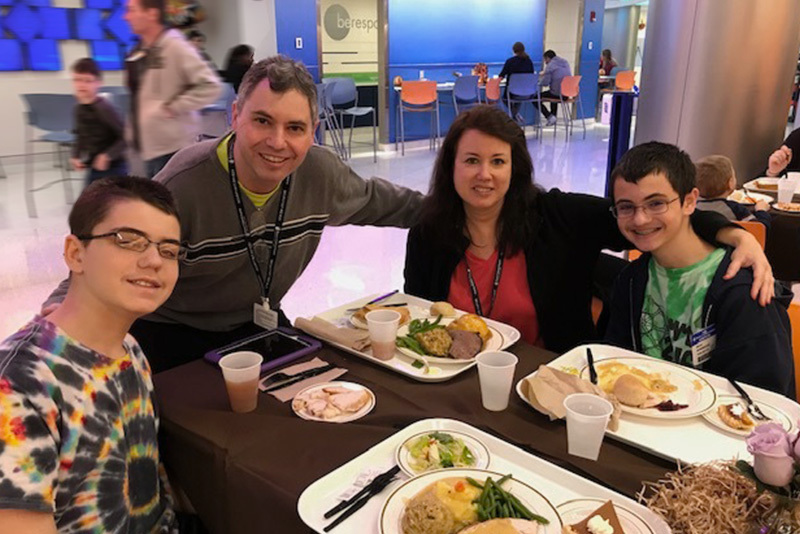
Fear — then a sense of relief
In this rare but serious condition, the part of the aorta (the heart’s largest blood vessel) that runs through the chest and abdomen is narrow, leading to dangerously high blood pressure and other concerns. A registered nurse, Kelly admits that she never saw the unusual diagnosis coming. Even more worrisome, she soon learned that local physicians lacked the experience necessary to treat this rare condition. “I felt like someone had kicked me,” she remembers. “It was like, ‘What do we do now?’”
Fortunately, Matt’s cardiologist in Connecticut, Dr. Felice Heller, believed her colleague at Boston Children’s Hospital, Dr. Diego Porras, could help, and sent him Matt’s records. Dr. Porras, co-director of the hospital’s Midaortic Syndrome and Renovascular Hypertension Center, reached out to the family and told them they would be meeting with the center’s entire care team, including nephrologists, surgeons, and nurses.
“As soon as we walked into Boston Children’s, we felt relieved,” says Kelly. That relief increased upon meeting one of the center’s other co-directors, nephrologist Dr. Michael Ferguson, who would head up Matt’s medical care. “I only had one question for him: Could he help my son?” she says. “He told me that they saw other kids just like Matt, and that made me feel better.”
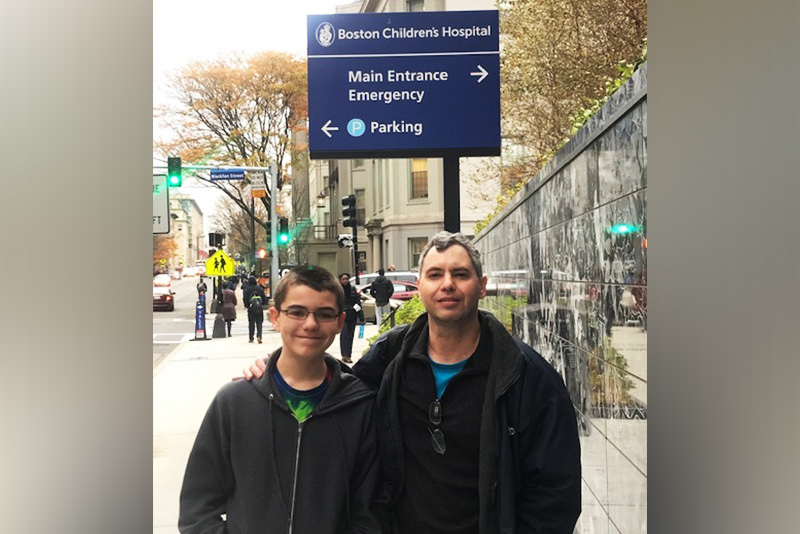
Surgery for midaortic syndrome
For the next year, the team tried to manage Matt’s blood pressure with medication and regular checkups, but the schedule wore on him. “His whole life revolved around meds and testing,” says Kelly. It was time for surgery. In November 2017, he underwent an innovative procedure called mesenteric artery growth improves circulation (MAGIC), which bypasses the aorta using the mesenteric arteries rather than prosthetic graft material. The surgery was performed by Dr. Heung Bae Kim and Dr. Khashayar Vakili, who helped pioneer it.
But it wasn’t smooth sailing just yet. His blood wasn’t flowing optimally and the arteries seemed to be closing. Matt’s doctors took a wait-and-see approach, with Dr. Porras performing a catheterization, but stopping short of placing a stent in the narrowed vessel. And then the tide began to turn. At an appointment last spring, Matt learned that his arteries were finally dilating — and his blood pressure was gradually beginning to decrease.
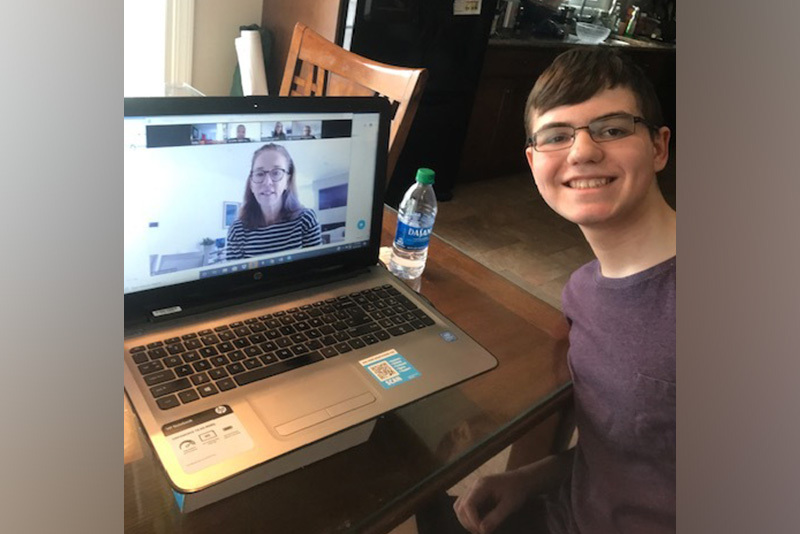
A smile throughout
Today, Matt is down to just one daily medication, and his Connecticut cardiologist, Dr. Heller, is thrilled with his progress, too. Kelly keeps in touch with his team in Boston and has forged relationships with parents of other kids with midaortic syndrome, sharing her experience in private Facebook groups. Now 16, Matt is a good student who loves playing video games — and he’s made his parents proud. Despite all he’s been through, he’s remained a calm and steady presence. “He’s had a smile throughout everything and has never once said ‘no,’” says Kelly. “Even though it’s been so hard, he keeps amazing us.”
Learn about the Midaortic Syndrome and Renovascular Hypertension Center.
Related Posts :
-

‘Supported and heard’: Harven gets care for an anorectal malformation
Like lots of 3-year-olds, Harven Gifford has a great imagination. Lately, he’s taken to roaring loudly and pretending that ...
-

One day closer: Second opinion for urologic pain changes Iker’s life at last
Like many kids, Iker Guzman enjoys playing with LEGO toys. But there was nothing lighthearted about the day a few ...
-

Rowan the Remarkable: Defying the odds with CPAM
This is the story of a baby named Rowan and his remarkable journey of beating the odds after doctors discovered ...
-

Surgery beats sclerotherapy for rectal prolapse in children ages 5 and older
Rectal prolapse — the protrusion of the lining of a child’s rectum through the anal sphincter — can occur for many ...



